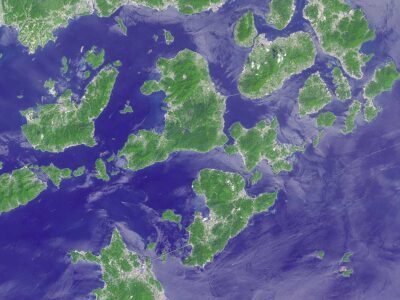In the first 3 parts of this series, we learned what the Gaia hypothesis (now Gaia theory) is; what led James Lovelock to realize this planet’s environment was being controlled from the surface; and how Gaia uses life to keep this planet comfortable.
In case you missed them: part 1, part 2, part 3
Now let’s talk about Mother Earth, because I think she is the main point of this whole discussion.
Indigenous wisdom tells us the Earth is our mother — she makes us and gives us a form, and she takes care of us as her beloved children. She gives us food, water, clothing, shelter, and all the many conveniences of our daily lives. Like any good mother, she’s a nurturer but also a teacher; she gives us lessons to correct our behavior and help us grow up.
The indigenous describe a Mother Earth who loves us but has limits. She gives freely, but she doesn’t say, take and take until I can give no more. She has many species of children to care for, so unlimited human growth is not part of her plan.
Gaia theory tells us the entire surface of this planet — the living organisms, rocks, soil, air, and oceans — act as one giant superorganism; a living entity with the goal of making this planet comfortable for all of life. The Earth isn’t habitable by accident. It’s habitable because Gaia has been adjusting and fine-tuning the conditions for billions of years.
Of course, James Lovelock doesn’t attribute a consciousness to Gaia. He tells us this planet “. . . is alive in the same way that a gene is selfish.” This is certainly appropriate for science, but conscious intent is all we need to link Gaia theory with the indigenous Mother Earth.
Gaia theory helps to explain Mother Earth. When scientists conduct research with Lovelock’s Gaia in mind, they are indeed proving that Mother Earth lives. And they’re telling us how she operates.
We know that Mother Earth intends to host life on this planet, and that she wants all her guests to be comfortable. This planet is her body, and she has been directing it for billions of years. We know that she has the power to maintain the unusual chemical mix of her air, the salinity of her waters, and the surface temperature of her body; all within the slightest margins of safety for unimaginably long periods of time. We can also see that she manages these essential conditions through the activities of her life forms.
It’s easy to imagine now that she is also able to use the varied features of her body to create planet-wide events that teach her children needed lessons — like a pandemic, for instance.
Unfortunately, Mother Earth’s human children have recently decided she doesn’t exist. They’ve come to believe they are in charge of life on this planet — (which seems laughable at this point; on the planetary time scale, we’ve only just arrived.)
Her humans seem to think they can bypass all of her planetary controls. They’re adding excess chemicals to the air, clearing forests, and filling wetlands; disrupting all the biological systems she uses to make a comfortable home for them.
They haven’t paid attention to her subtle warnings, and her patience has worn thin.
What will make them listen?
Since Gaia theory tells us Mother Earth maintains this planet through her life forms, it’s worth asking:
What does Mother Earth want from her humans?
What does Mother Earth want from me?
How can I help?


 The Gaia Hypothesis, Part 3
The Gaia Hypothesis, Part 3